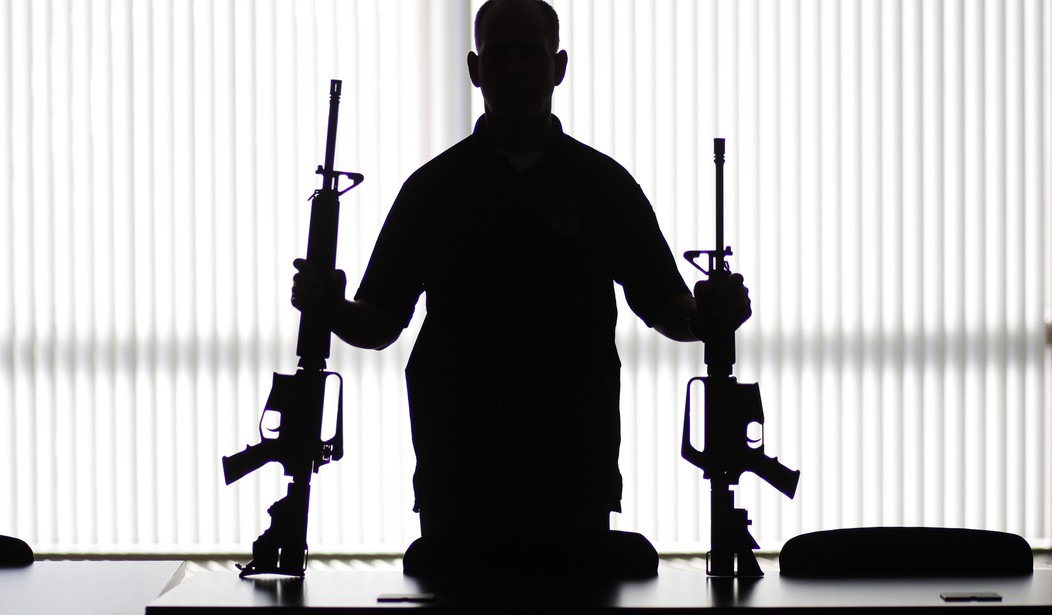Two Democratic congressmen are pushing a bill to limit so-called ghost guns. This runs along with a push to get President Joe Biden to restrict incomplete lower receivers, doing essentially the same thing administratively.
H.R. 1454, introduced by Reps. Adriano Espaillat (NY-13) and Brad Schneider (IL-10), seeks to redefine firearm kits as actual firearms. Currently, the ATF only classifies complete lower receivers as the actual firearm, which has created a cottage industry of incomplete receivers many people purchase to finish and build their own guns.
I know, because I’ve built one myself and it was a great time.
In a tweet, Espaillat said, “The Ghost Guns Are Guns Act is critical to addressing gun violence in the United States, and will undoubtedly save lives.”
Will it really?
See, we’ve seen a lot of news reports all about how the threat from so-called “ghost guns” was growing, but there tends to be a distinct lack of numbers. The few times they’re provided, they generally show that the “problem” is minuscule in relation to the broader issue of violence in our society.
Why is that? Well, I reached out to the ATF a while back to find out.
April Langwell, the chief of the Public Affairs Division of the ATF, noted that her agency was ill-equipped to provide any insight into how many such firearms were recovered. “ATF cannot provide a number of recovered crime guns that were privately made. For a number of reasons, ATF does not believe that the number of privately made firearms that has[sic] been reported to ATF would be indicative of, or representative of, the number of privately made firearms actually recovered by law enforcement.”
Langwell notes that the ATF typically provides tracing data on recovered firearms, yet many local departments may not submit information about homebuilt, and thus unserialized, firearms.
The FBI’s Uniform Crime Report lists, among other things, the number of violent crimes committed with different weapon types. While it contains numbers for handguns, rifles, and even fists, no information breakdown shows just how many of these firearms may have been ghost guns.
The FBI did not reply to requests for whether they tracked the information despite its omission from the report.
This lack of data leads some, such as myself, to question whether the bill is necessary.
I’m not alone.
I reached out to Mark Oliva, communications director for the National Shooting Sports Foundation. He argued that his organization opposes the bill, arguing that it has been lawful to build your own firearms in this country since colonial times.
He also told me, “The overwhelming majority of firearms sold in America are fully finished and produced by licensed and regulated manufacturers and sold with a background check. Home-building a firearm, while gaining in popularity, is a labor-intensive and detailed process practiced by a minority of firearm enthusiasts. Anyone producing firearms for sale or distribution must be regulated by the ATF.”
Additionally, He also suggested that if Reps. Espaillat is concerned about the ATF’s ability to combat those who manufacture guns illegally, perhaps he should have considered a bill that increases the agency’s resources.
It’s a fair point.
Dave Workman is the Communications Director for the Citizens Committee for the Right to Keep and Bear Arms and also works with the Second Amendment Foundation as the editor-in-chief for the website TheGunMag.com. He’s also skeptical of Espaillat’s claim. In his 40 years as a journalist and activist watching the firearm-related news, Workman says, “I haven’t personally seen any evidence that so-called ghost guns are a major crime problem. If a bad guy wants a gun, he’ll steal it. He won’t run down to Radio Shack to buy a 3D printer.”
Instead, Workman classifies the bill as a distraction, calling it, “wasteful sensationalism.”
Frankly, I tend to agree.
See, the problem is that the bill seeks to ban something that it declares is some kind of massive problem, but we don’t have any hard evidence that this represents a real threat, just a “growing” one. That language should be troubling.
If authorities find two “ghost guns” a year for a couple of years, then they find three the next, they can call it a 50 percent increase. It doesn’t necessarily mean things are going down the crapper. It just means the overall number was so low that any uptick is going to seem statistically significant, even though it’s not.
Additionally, these firearms found at crime scenes don’t really tell us how they were obtained? While I have little doubt that some are producing these firearms for the criminal population, at least some of them may well be stolen from law-abiding citizens. Because they lack serial numbers, there’s virtually no way to track them.
Espaillat and Schnieder can try to bill this as whatever they want, but the truth of the matter is that this bill is a good way to accomplish nothing at all except, as per usual with gun control, interfere with the activities of law-abiding citizens.








